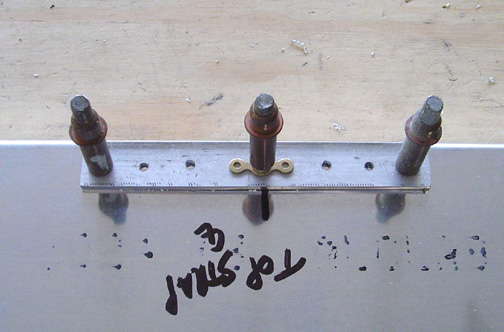
Platenuts are important any place where access will be limited later, after skins have been riveted on. There are a lot of platenuts in various areas on the plane, so it is handy to have a fast accurate way to install them.
I've seen more than a few methods for installing platenuts. There are templates you can buy and special tools I suppose, but it doesn't get much easier and fool proof than the Eric Newton method.
Illustrated below is my installation of platenuts on the false spar behind the fuel tanks in the wings. The plans call for 1/8" x 3/4" by 5" long doublers. The tank support straps that hold the fuel tanks in place are attached at these points and since access is limited, platenuts are installed to hold the bolts.
Here is how I do it:
1. Start by drilling a #30 hole where the bolt or screw will be. (note: If you are installing platenuts for #6-32 screws, drill the hole #40 hole. The #30 cleco will not fit in a 6-32 platenut). Using the correct size cleco, attach a platenut to the hole using the cleco through the center threaded portion (where the screw or bolt will go).

2. Using a 6" or 12" long #40 drill bit, drill one of the legs and put a 3/32 (silver) cleco in that hole:
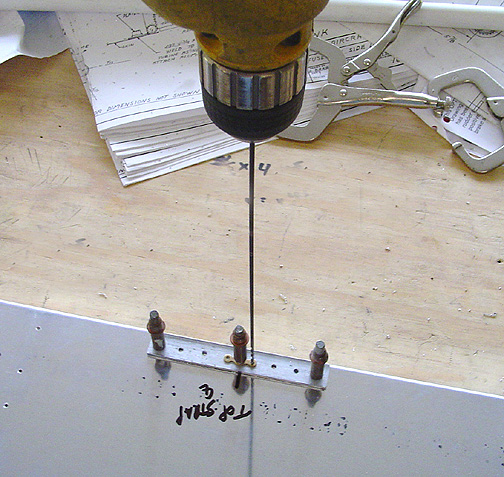
3. Now, drill the other leg with the long bit
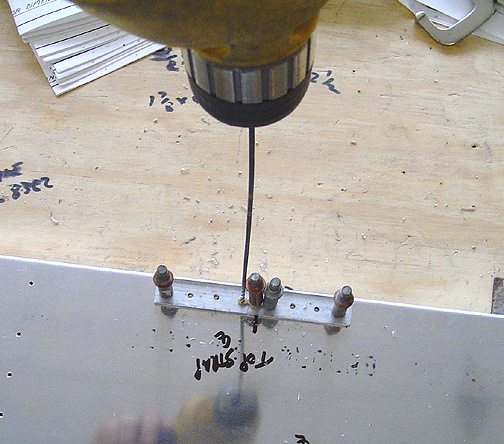
4. Remove the clecos and the platenut. Now drill the center hole to the proper size for the screw or bolt you are installing.
5. Deburr, prep and prime the parts using whatever method you've chosen.
6. Dimple or countersink (depending on the thickness of the material) the holes where the platenut legs are.
7. Attach the platenut with flush rivets as shown below.
Here's the backside . . .:
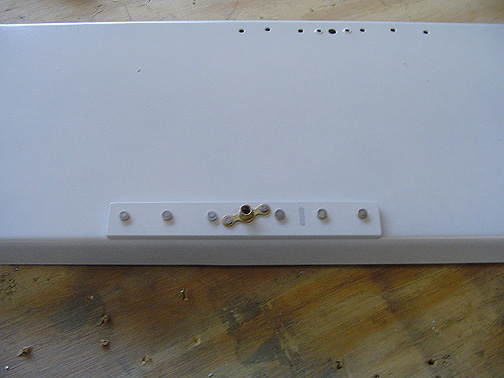
and here's the front side with a bolt started:
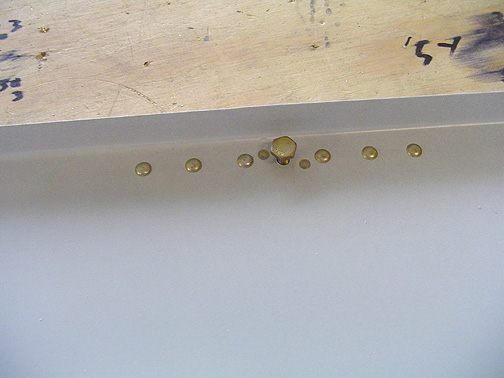
In these, I dimpled the skin and countersunk the doubler since its 1/8" thick. If you have just a couple of skins, you can dimple both and dimple the platenut legs as well. To dimple the platenut legs you will need to grind down one edge of the male dimple die so it will fit beside the threaded portion of the platenut.
That's it, simple and effective. If you do a lot of these in a row, like on the fuel tank cover, I suggest that you change out the platenut you are using as a template to drill the holes with. The holes in the platenut will start getting enlarged after being used over and over as a template. I generally use one about 4 times, then trade for another. These platenuts can still be riveted on if you don't let the holes get too large.
Click here to go back to the home page otherwise use your browser's back button to return to the page you were just visiting.